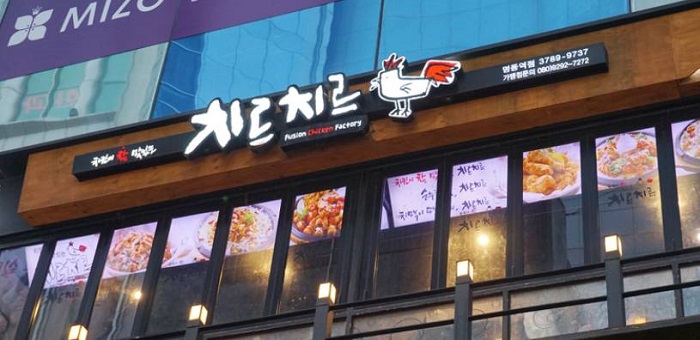Chireuchireu Myeong-dong Station(치르치르 명동역)
1.3Km 2020-11-25
7 Myeongdong 8ga-gil Jung-gu Seoul
+82-2-3789-9737
This is a place that sells various types of fusion chicken. This Korean dishes restaurant is located in Jung-gu, Seoul. The representative menu is fried chicken.
Wellness Pharmacy [Tax Refund Shop] (웰리스약국)
1.3Km 2024-04-19
51, Myeongdong 10-gil, Jung-gu, Seoul
-
Wellness Pharmacy [Tax Refund Shop] (웰니스약국)
1.3Km 2024-06-27
51, Myeongdong 10-gil, Jung-gu, Seoul
-
Innisfree - Myeong-dong Station Branch [Tax Refund Shop] (이니스프리 명동역)
1.3Km 2024-04-18
2F, 43, Myeongdong 8-gil, Jung-gu, Seoul
-
Seowon (서원)
1.3Km 2024-03-11
141, Toegye-ro, Jung-gu, Seoul
+82-2-776-0214
Located in Myeongdong Street, Seowon focuses on porridge. It boasts a wide variety of porridge made with abalone, chicken, samgye (chicken and ginseng) mushrooms, oysters, shrimp, vegetables, etc. They also have Korean-style juices made with ginseng, fruits, and vegetables that goes well after finishing porridge. The restaurant opens early in the morning, so it's a great place to grab a quick breakfast.
Aēsop - Samcheong Branch [Tax Refund Shop] (이솝 삼청)
1.3Km 2024-04-17
58-3, Samcheong-ro, Jongno-gu, Seoul
-
JDX - Jongno Branch [Tax Refund Shop] (JDX 종로)
1.3Km 2024-04-19
1F, 236-1, Jong-ro, Jongno-gu, Seoul
-
Black Yak - Jongno Branch [Tax Refund Shop] (블랙야크 종로)
1.3Km 2024-04-22
22, Jong-ro 36-gil, Jongno-gu, Seoul
-
CU - Koreana Hotel Branch [Tax Refund Shop] (cu코리아나호텔점)
1.3Km 2024-06-26
135, Sejong-daero, Jung-gu, Seoul
-
Beodeul Maru - Korea Cultural Heritage Foundation Branch [Tax Refund Shop] (한국문화재재단 버들마루)
1.3Km 2024-10-15
37, Samcheong-ro, Jongno-gu, Seoul
-


![Wellness Pharmacy [Tax Refund Shop] (웰니스약국)](http://tong.visitkorea.or.kr/cms/resource/54/2878654_image2_1.jpg)
![Innisfree - Myeong-dong Station Branch [Tax Refund Shop] (이니스프리 명동역)](http://tong.visitkorea.or.kr/cms/resource/29/2878629_image2_1.jpg)
![Black Yak - Jongno Branch [Tax Refund Shop] (블랙야크 종로)](http://tong.visitkorea.or.kr/cms/resource/32/2878232_image2_1.jpg)
 English
English
 한국어
한국어 日本語
日本語 中文(简体)
中文(简体) Deutsch
Deutsch Français
Français Español
Español Русский
Русский